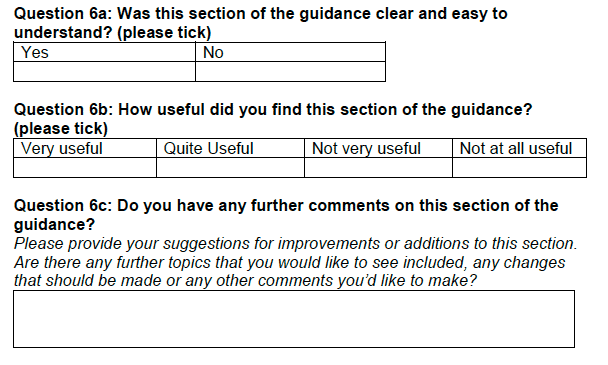Draft Self-directed Support Statutory Guidance on care and support
A public consultation on draft statutory guidance to accompany the Social Care (Self-directed Support) (Scotland) Act 2013
Section 7: Facilitating Choice
This section deals with the challenge of providing genuine choice in terms of promoting a range of providers and a suitable range of support options.
81. Access to choice "on paper" is of very little value if there is a lack of variety in the range of providers or a lack of variety in the type of support on offer. Section 19 sub-section 2 in the 2013 Act requires the authority to take active steps promote variety in the support options available to those who are eligible for care and support.
Promotion of options for self-directed support
Social Care (Self-directed Support) (Scotland) Act 2013, section 19
(1) A local authority must take steps to promote the availability of the options for self-directed support.
(2) For the purpose of making available to supported persons a wide range of support when choosing options for self-directed support, a local authority must, in so far as is reasonably practicable, promote-
(a) a variety of providers of support, and
(b) the variety of support provided by it and other providers.
82. The authority should view their role as being a facilitator of choice for individuals. In discharging this role they may wish to adopt an approach to commissioning based on Table 8 below.
Table 8: Commissioning for self-directed support
1. Learn and understand what people need and want Individuals in receipt of support, operational social workers, and providers are all rich sources of data for building a picture of need and demand in an area. The authority/partnership should consult with a variety of different sources in order to gather the good quality information about what people need and want from the services available. User views and information about current services will provide an understanding of what is already on offer and whether it matches what people need or want. |
2. Set out what you will do to meet what people need and want The authority/partnership should use the information from their consultation in order to plan what the variety of services might look like in future. This will provide information about gaps in support provision and evidence for influencing the development of new support and services. |
3: Try out different approaches The authority/partnership should bring together the results of the analysis and planning stages into what they will actually do to facilitate the choices. The actions taken at this stage will be different depending on the needs of the local area but may include: allocating additional resources for specialist support services, providing specialist training; setting aside funding for innovation; financial incentives to meet gaps in support; or simply being clear about the commissioning or de-commissioning of services. |
4. Review - ask if it worked and make changes This final stage is an opportunity to assess whether the process has worked. By reviewing the information gathered during the earlier stages this assessment should shape what the local authority intends to do to facilitate a variety of choices in future. |
Further guidance and hyperlinks:
Joint Improvement Team - Joint Strategic Commissioning
http://www.jitscotland.org.uk/action-areas/commissioning/
Scottish Government (2012), Guidance on the procurement of care and support services by public bodies in Scotland
http://www.scotland.gov.uk/Publications/2010/09/21100130/0
Further links (including a guide to professionals, user's guide and carer's guide) to follow.
Draft Statutory Guidance on Care and Support
Consultation Questions
Section 7: Facilitating genuine choice for individuals

Contact
Email: Adam Milne
There is a problem
Thanks for your feedback